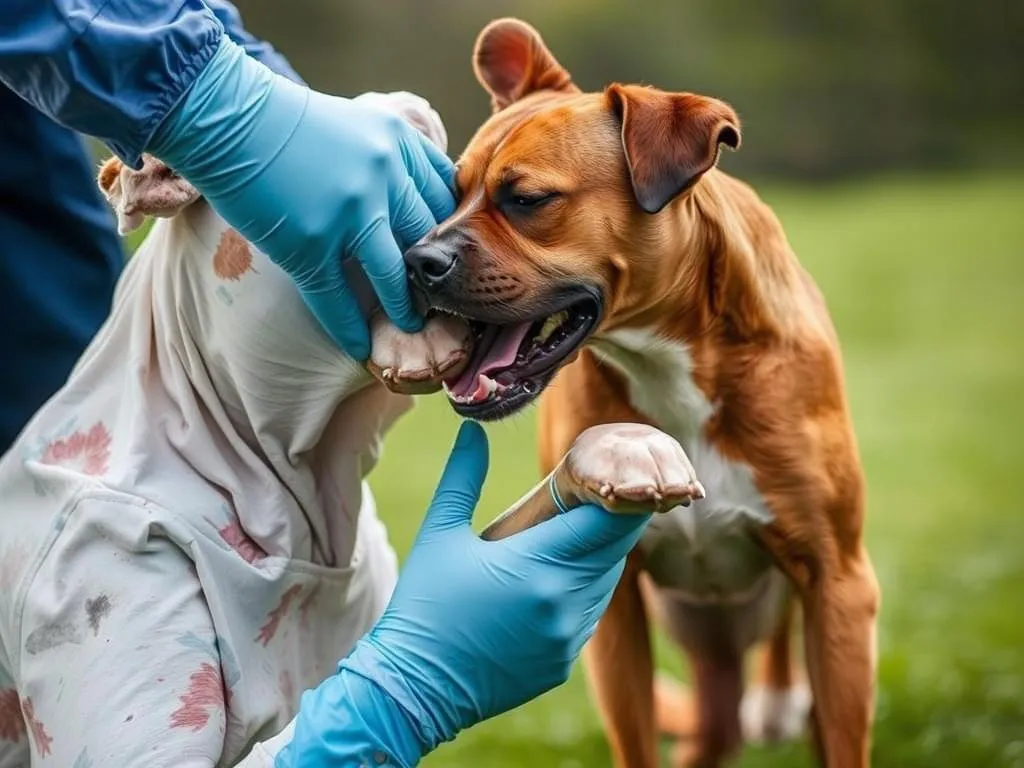
Dog fighting is a tragic reality that impacts the lives of many dogs and their owners. Understanding how to treat dog fighting injuries is crucial for any dog owner, as timely and effective care can mean the difference between life and death for a beloved pet. This article delves into the world of dog fighting injuries, the immediate response required, and the steps towards recovery and prevention.
Understanding Dog Fighting Injuries
Types of Injuries
Dog fighting can result in a range of serious injuries.
Physical Injuries
These may include:
– Lacerations and Puncture Wounds: These are common in fights and can range from minor cuts to deep wounds that require stitches.
– Fractures and Broken Bones: The force of fighting can lead to serious fractures, often requiring surgical intervention.
– Soft Tissue Injuries: Damage to muscles, tendons, and ligaments can result from the intense physicality of dog fights, often leading to long-term mobility issues.
Psychological Injuries
In addition to physical harm, dogs can suffer from psychological trauma. Signs include:
– Trauma and Stress Reactions: Dogs may display anxiety, fear, or aggression following a fight.
– Behavioral Changes: An affected dog might become withdrawn, excessively submissive, or overly aggressive.
Common Causes of Injuries
Understanding the triggers of aggression can help mitigate the risk of dog fights.
Aggression Triggers
Several environmental factors can lead to fights, including:
– Overcrowding: A high density of dogs in a small area can increase stress and lead to aggressive encounters.
– Resource Guarding: Dogs may fight over food, toys, or territory, leading to injuries.
Initial Response to Injuries
Assessing the Situation
If a fight occurs, the first step is to ensure safety for yourself and the dogs involved.
Immediate Steps to Take
– Separate the Dogs: Use caution when separating fighting dogs to prevent injury to yourself.
– Evaluate the Severity of Injuries: Quickly assess the injuries sustained by the dogs involved.
First Aid Procedures
Knowing basic first aid can be invaluable in treating injuries from dog fights.
Basic First Aid Techniques
– Controlling Bleeding: Apply pressure to the wound with a clean cloth or bandage to control bleeding.
– Cleaning Wounds: Carefully clean the wound with a saline solution or mild antiseptic. Avoid using harsh chemicals that can irritate the wound.
– Splinting Suspected Fractures: If you suspect a fracture, immobilize the limb using a splint made from rigid materials like cardboard or wood.
When to Seek Professional Help
Recognizing the signs that indicate professional care is needed can save a dog’s life.
Signs Indicating Professional Care is Needed
– Severe Bleeding: If bleeding doesn’t stop within a few minutes, seek veterinary help immediately.
– Difficulty Breathing or Unconsciousness: These are critical signs that require urgent attention.
– Infections and Signs of Shock: Look for symptoms like pale gums, rapid heartbeat, or lethargy, which indicate serious health issues.
Professional Treatment Options
Veterinary Care
When injuries are severe, visiting a veterinarian is essential for comprehensive care.
What to Expect at the Vet
– Typical Diagnostic Procedures: Your veterinarian will likely perform X-rays to assess fractures and conduct blood tests to check for infections.
– Treatment Options: Depending on the injuries, treatment may involve surgery, antibiotics, or pain relief medications.
Follow-Up Care
Post-treatment care is critical to ensure a full recovery.
Importance of Follow-Up Visits
– Monitoring Recovery: Regular check-ups allow the vet to monitor the healing process and detect any complications early.
– Adjusting Care Plans: Based on the dog’s recovery progress, the vet may adjust medications or suggest additional therapies.
At-Home Care and Recovery
Creating a Safe Recovery Environment
Setting up a conducive recovery space is vital for a dog’s healing process.
Home Setup for Recovery
– Comfortable Space: Create a quiet area with a comfortable bed where your dog can rest undisturbed.
– Limited Movement: Restrict your dog’s movement to avoid aggravating injuries.
Medication Management
Proper medication administration is crucial for recovery.
Administering Prescribed Medications
– Best Practices for Giving Oral Meds: Use treats or pill pockets to make it easier for your dog to take medication.
– Recognizing Side Effects: Be vigilant for any adverse reactions, such as vomiting or lethargy, and consult your vet if they occur.
Physical Rehabilitation
Encouraging gentle movement can help in rehabilitation.
Rehabilitation Exercises
– Gentle Exercises: Short, controlled walks can promote healing and prevent stiffness.
– Importance of Physical Therapy: Engaging a professional in canine physical therapy can provide tailored exercises that enhance recovery.
Preventing Future Injuries
Recognizing Aggression Signs
Being alert to signs of aggression can help prevent future incidents.
Identifying Triggers of Aggression
– Behavioral Signs: Growling, raised hackles, and intense staring can indicate a dog is on edge and may react aggressively.
Training and Socialization
Investing in training and proper socialization can significantly reduce the likelihood of fights.
Importance of Socializing Dogs
– Techniques for Improving Social Behavior: Gradual exposure to various environments and controlled interactions with other dogs can help a dog become more well-adjusted.
– Recommended Training Programs and Resources: Look for positive reinforcement-based training programs that focus on building good behaviors.
Responsible Ownership
Responsible dog ownership plays a crucial role in preventing fights.
Best Practices for Dog Owners
– Spaying/Neutering: This can significantly reduce aggression-related behaviors.
– Keeping Dogs on Leashes: Use a leash in public areas to maintain control and prevent potential conflicts.
Conclusion
Timely and effective treatment of injuries is critical for a dog’s recovery. Understanding how to treat dog fighting injuries not only helps save your pet’s life but also fosters a responsible approach to dog ownership. By being proactive about socialization and training, dog owners can significantly mitigate the risks associated with aggression and fighting.
Empowering yourself with knowledge about dog health care will ensure that you are prepared to help your furry friend in times of need. Remember, being a responsible dog owner means not only caring for your pet when injuries arise but also taking steps to prevent such situations from occurring in the first place.









